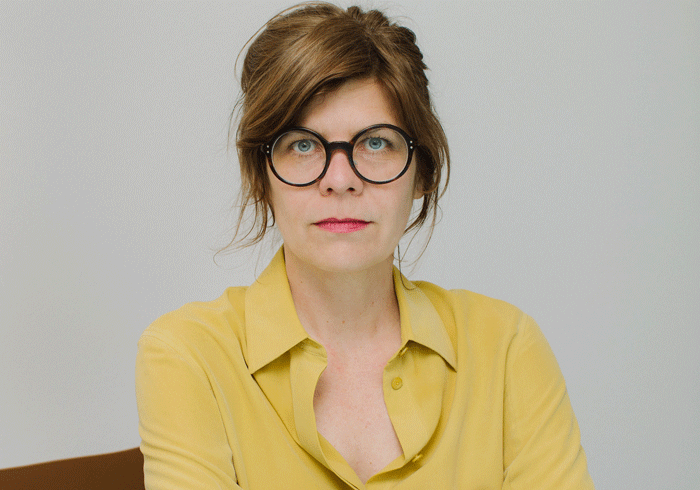LISTE first opened its doors in 1996 and since then has developed into a key art fair for new galleries. E.Gutzwiller & Cie, Banquiers has been a supporter from the beginning, and has been the main partner since 1997. The private bank, with its head office in Basel, was founded in 1886 by Carl Gutzwiller and is still owned and managed by the Gutzwiller family and their partners. In September 2018 Joanna Kamm, a former gallerist, was appointed the Basel fair’s new director. To kick off a series of interviews with the directors of galleries new to LISTE this year, or who first exhibited in 2018, ArtReview spoke with Kamm about her own inaugural edition.
ArtReview There has been a proliferation in art fairs over the last decade, what makes LISTE stand out?
Joanna Kamm LISTE has a very clear concept; it is the leading international fair for new discoveries in contemporary art, with the latest developments and trends presented by a younger generation of galleries. As a visitor you can discover artistic positions that not only examine the present but also create it – through new aesthetics, media and values.
And thus we are very interested in enabling galleries starting out with a strong programme to present that in Basel. And in this sense it is also important for us to research galleries that operate beyond the art metropolises and outside the Western cultural sphere in order to be able to present a diverse picture of young contemporary art. I work with a network of people who have great knowledge of the young art scene in certain regions. We have a selection committee which I have made even more international. Among the 33 galleries are Sandwich from Bucharest and Sweetwater from Berlin, two young galleries for whom LISTE 2019 will be their first fair ever. For 21 galleries – including A Thousand Plateaus Art Space in Chengdu, Dastan’s Basement in Tehran, LC Queisser in Tbilisi, Piedras in Buenos Aires, ROH Projects in Jakarta and Sariev Contemporary from Plovdiv and Sofia, among others – this LISTE marks their first time at the fair. Also exhibiting are galleries from countries such as the US and Italy, but which are located beyond the established art centers – such as Adams and Ollman in Portland, Good Weather in North Little Rock and Veda in Florence.
AR This is your first fair as director, have you introduced any changes?
JK The success of the previous 23 years under the direction of Peter Bläuer proves the relevance of LISTE. So, for me, it’s not about turning LISTE upside down, but of first sensing how everything works and then thinking about which adjustments would make sense in the future.
However, we have made a few small adjustments this year. We have simplified the exhibition architecture and opened up more windows and doors to create a calmer atmosphere in the existing building. I have also initiated The Joinery as successor to the performance programme. The Joinery opens up a new possibility for galleries, which at no extra cost can present videos and performances that they are not able to show at their stands. We will also host a discursive programme on the latest developments in contemporary art with Spike Art Magazine. As Spike Forum they have organised a series of talks on new artistic strategies in which artists such as Sandra Mujinga and Ed Fornieles, as well as the likes of Elie Ayache, CEO of a financial software company, and Kei Kreutler from Gnosis, a forecasting and information platform on the Ethereum Blockchain, will participate. As a fair that shows the latest developments in contemporary art, it’s important that we offer a place where you can inform yourself and where these emerging discourses can be discussed.
AR What experience or concerns have you brought to bear on the fair from your previous role as a gallerist?
JK As a former gallerist myself, I know the wishes, needs, thoughts and worries of our participants: that simplifies decisions or makes it easier for me to understand why galleries decide on something. And it is always important for me to remind people that many artists would remain undiscovered without gallerists who are willing to take great risks in tracking down the unknown, and – often without insurance that the market will embrace the work – enable artists to have their first solo exhibitions and present their art to international audiences at fairs. It is through galleries’ commitments that we have the opportunity to see great art. Living with this art leads to a richer, different vision of the world. This needs to be supported. And so does LISTE.
AR Do you remember your first LISTE? What advice do you have for galleries just starting out?
JK Oh, yes, I remember very well. All the artists I showed came to Basel with me, and the four of us camped in the living room of a friend. We were very excited. It went better than I ever dreamed it would. All of a sudden the international art world opened up to us, the collectors and curators were full of curiosity and there was an electrifying energy. At the same time I made friends with my colleagues, who became irreplaceable in the following years. LISTE gave me, like other galleries, the opportunity to lay the foundation on which I could build everything else. So, if you are asking for advice: one should take LISTE as a moment of supportiveness and an opportunity that reaches far beyond participation itself. Building up a gallery takes time: you should not try to rush the gallery onto all the major platforms straightaway, but take it step by step. That way you can build the support you need to make your gallery visible.
21 May 2019
